How to Calculate Sales Growth + Strategies for Success
Casey O'Connor
Sales growth is one of the most important and telling measures of an organization’s success.
It helps internal teams and investors gauge how effectively sales and marketing teams are working toward their targets, and how likely they are to meet their goals and sales forecasts.
Just about any company can post impressive revenue results once in a while, but consistently strong sales growth is a much truer measure of sustainable success.
In this article, we’ll go over everything you need to know about sales growth, including how to calculate and track it, why it’s so crucial for businesses of any size, and some of our best strategies for success.
Here’s what we’ll cover:
- What Is Sales Growth?
- How to Calculate Sales Growth
- Why Is Calculating Sales Growth Important?
- How to Track Sales Growth
- Sales Growth Strategies for Success
What Is Sales Growth?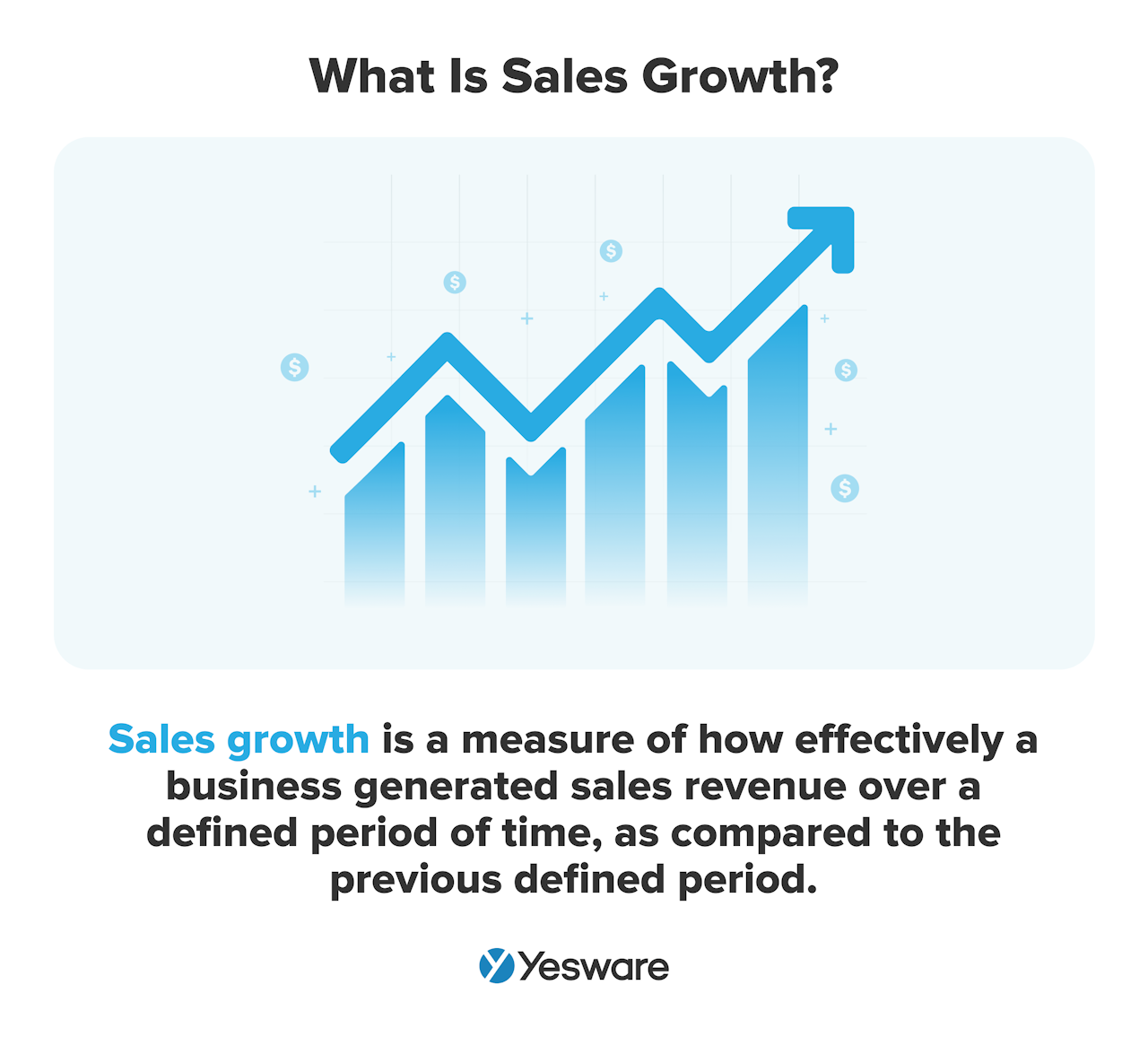
Sales growth is a measure of how effectively a business generated sales revenue over a defined period of time, as compared to the previous defined period. Most sales growth is calculated on a year-over-year, quarter-over-quarter, or month-over-month basis.
Sales growth can be expressed as a percentage (which is usually called “sales growth rate”) or in dollars or units. Teams should use both forms of sales growth data to analyze their success.
Sales growth can be organic or inorganic. Organic sales growth occurs due to a company’s already-existing resources; inorganic growth, on the other hand, is usually a result of mergers or acquisitions. Organic growth is slower but more affordable. 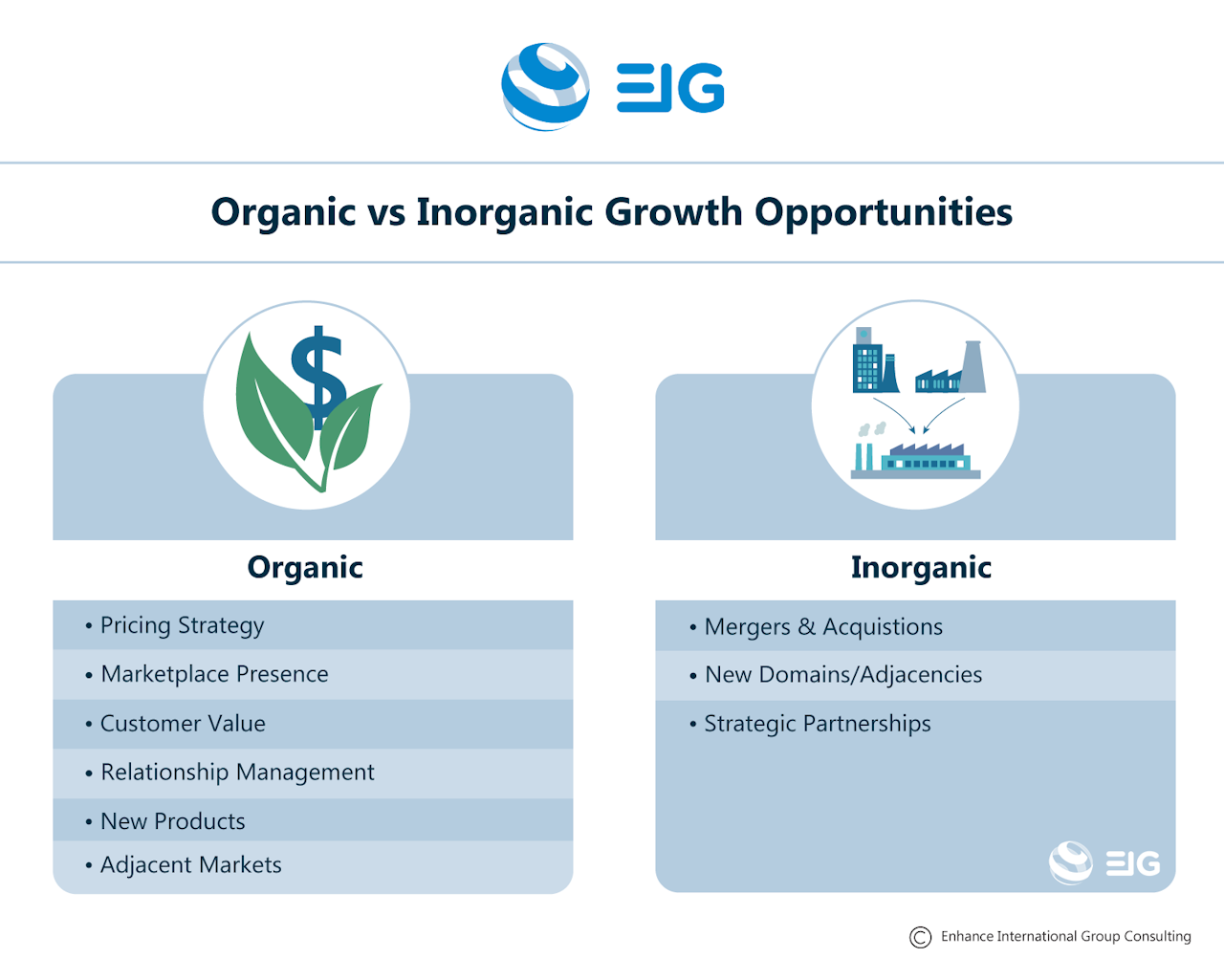 Calculating sales growth helps businesses make data-driven decisions about how to use sales and marketing resources, how to best approach sales goals and targets, and how to attract and retain investment opportunities.
Calculating sales growth helps businesses make data-driven decisions about how to use sales and marketing resources, how to best approach sales goals and targets, and how to attract and retain investment opportunities.
How to Calculate Sales Growth
Here is the formula for calculating sales growth: 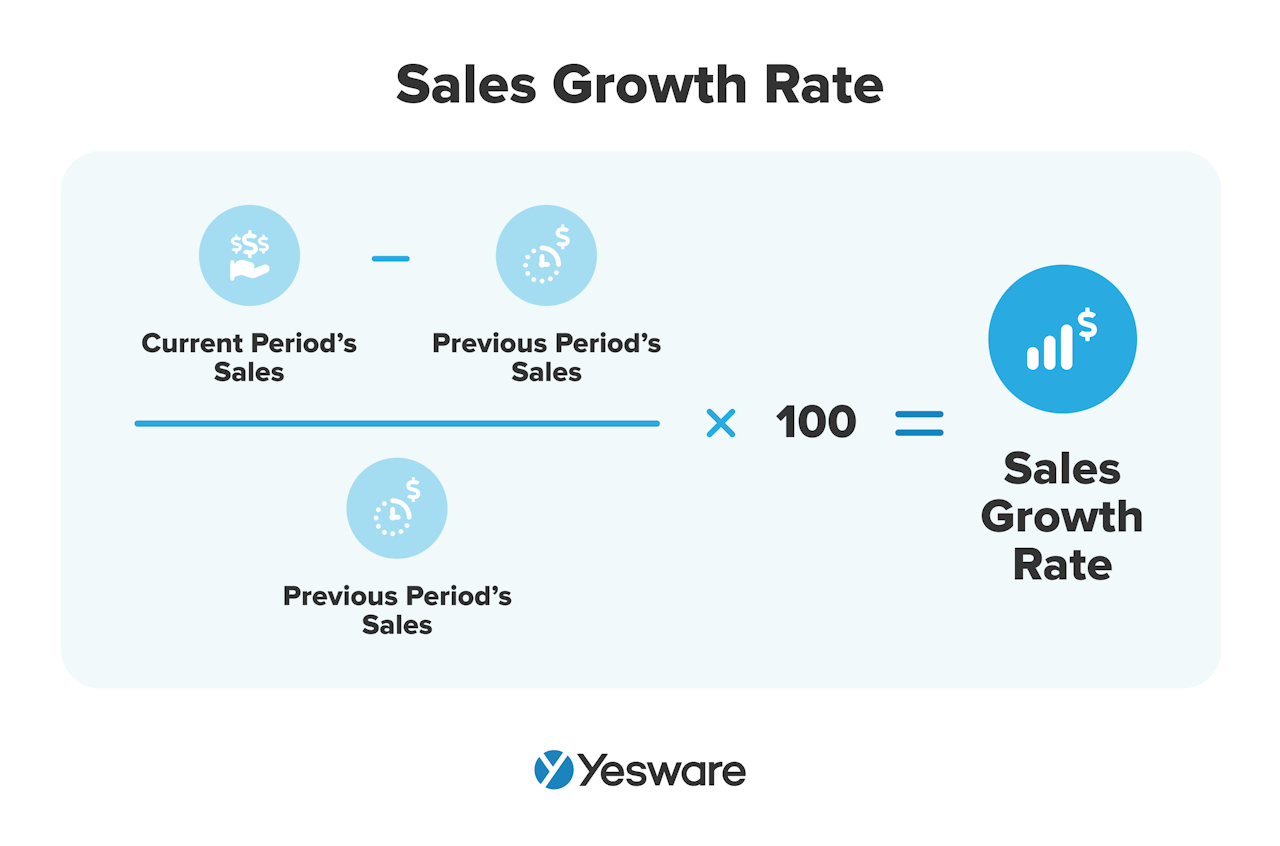 Use net sales for this formula, and make sure that the previous and current time periods are the same length (typically one month, quarter, or year).
Use net sales for this formula, and make sure that the previous and current time periods are the same length (typically one month, quarter, or year).
A positive sales growth rate means that sales are growing; a negative one indicates that sales are declining.
Most companies that track sales growth pay careful attention to their average annual sales growth rate (ASGR). The ASGR is a measure of how much a company’s sales have grown over the course of several years versus one individual year compared to another.
To calculate ASGR, use the formula above to calculate several YOY periods and then find the average of them all.
Why is Calculating Sales Growth Important?
Many teams overlook sales growth with the assumption that, as long as their other sales metrics and sales KPIs are strong, they’re moving in the right direction.
But sales growth on its own is actually very important and can act as a pulse on the overall health of your business.
Shows the Effectiveness of Your Sales Process
A consistently positive sales growth rate indicates that your sales process — and the reps working it — are doing pretty well overall.
A declining sales growth rate, on the other hand, can be a sign that something internal isn’t functioning optimally.
Measures You Against Your Competitors
Your sales growth rate isn’t just important as a standalone figure; it also matters relative to that of your competitors.
At the very least, your sales growth rate needs to be better than your direct competitor’s in order to stay in the game.
Attracts and Retains Investors
Despite the fact that not all sales teams rely heavily on sales growth, not the same can be said for investors — all investors pay attention to sales growth.
A company with negative or even flat sales growth will seem risky to investors; a positive sales growth rate, on the other hand, can be a sign to investors that they’re likely to get a good ROI if they invest in your organization.
How to Track Sales Growth
Sales growth is a lagging indicator, meaning it’s backward-looking data that indicates how well a process or team performed.
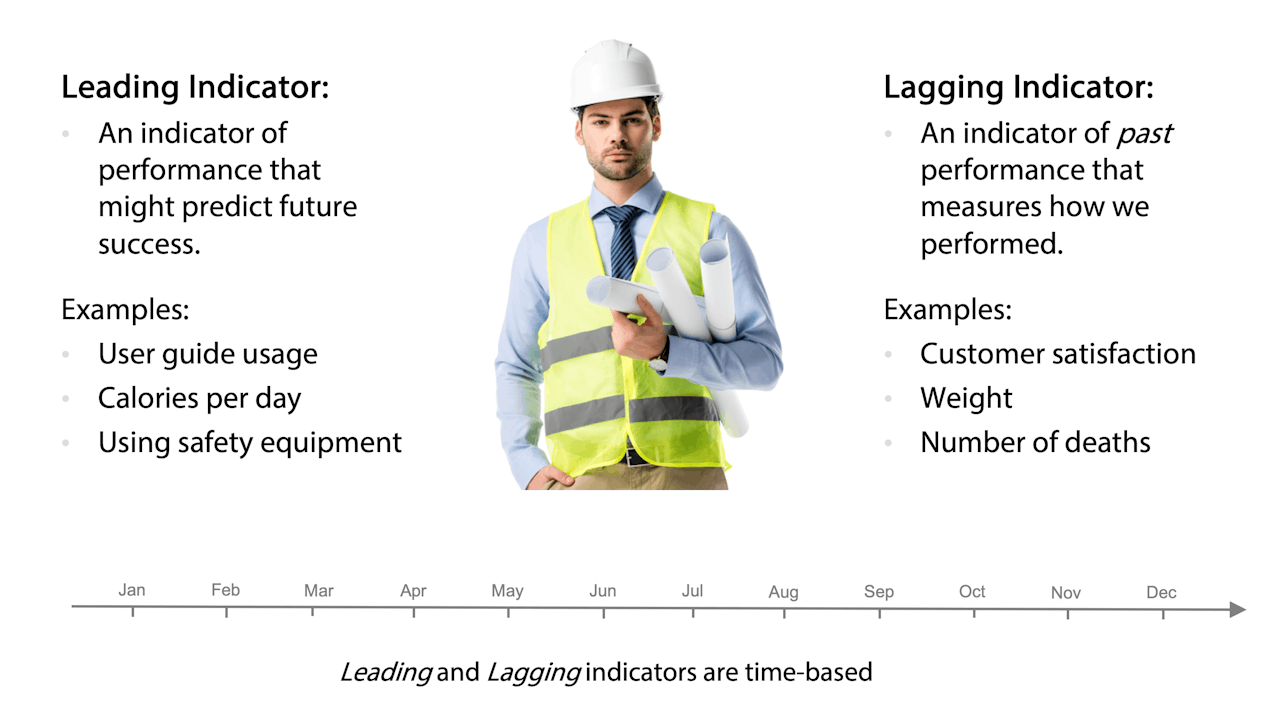
If you want to track sales growth before the end results come in, the following metrics will help you keep track of how the KPI is likely to take shape for the remainder of the period:
- Revenue/revenue growth
- Average revenue per account
- Customer lifetime value (LTV)
- Gross income
- Number of units sold
- Average order size
A disruption or outlier in any of these sales metrics can act as a canary in the coal mine when it comes to the sales growth rate.
What Is a Good Sales Growth Rate?
The truth is, there isn’t a standardized value that represents a “good” or even subpar sales growth rate.
What constitutes good sales growth is highly dependent on three main factors: company size, your competition’s sales growth rate, and your team’s/organization’s KPIs and larger overall goals.
Company Size
The size of your company will impact its sales growth rate and whether or not it’s up to par. Smaller companies grow faster than larger ones, in general, because they have more room to grow.
What’s more, growth of any size has a more noticeable impact on smaller companies, whereas larger companies need to see significant growth in order to see effects.
Let’s highlight this with an example:
Imagine Startup A earns $50,000 in revenue in Quarter 1, and $70,000 in revenue in Quarter 2. Their QOQ sales growth for that period was $20,000, or 40%.
On the other hand, Enterprise B earns $4 million in Quarter 1, and $5 million in Quarter 2. This represents sales growth of $1 million, or 25%.
Although Enterprise B’s QOQ growth is larger in absolute terms ($1 million vs. $20,000), Startup A’s sales growth rate is actually “better.”
Competition
When it comes down to it, the only way your sales growth rate needs to be “good” is to be better than your direct competitor’s sales growth rate.
A 3% sales growth rate doesn’t sound too outstanding, but it’s good enough if your competition is only seeing 1% growth during the same period.
Individual Sales Goals and KPIs
Sales growth is important, but there may be times when your sales team or overall organization is targeting different areas.
If your sales goals for this quarter revolve around lead qualification, for example, you may not see dramatic sales growth in the immediate term. That’s okay. Context matters when it comes to sales growth, so take into account your sales goals before you panic about a plateau or decline.
Historical sales data, industry benchmarks, and market trends can all help you get a sense of what a good sales growth rate is for your team.
Tip: Looking to grow your team? Grab our free blueprint below.
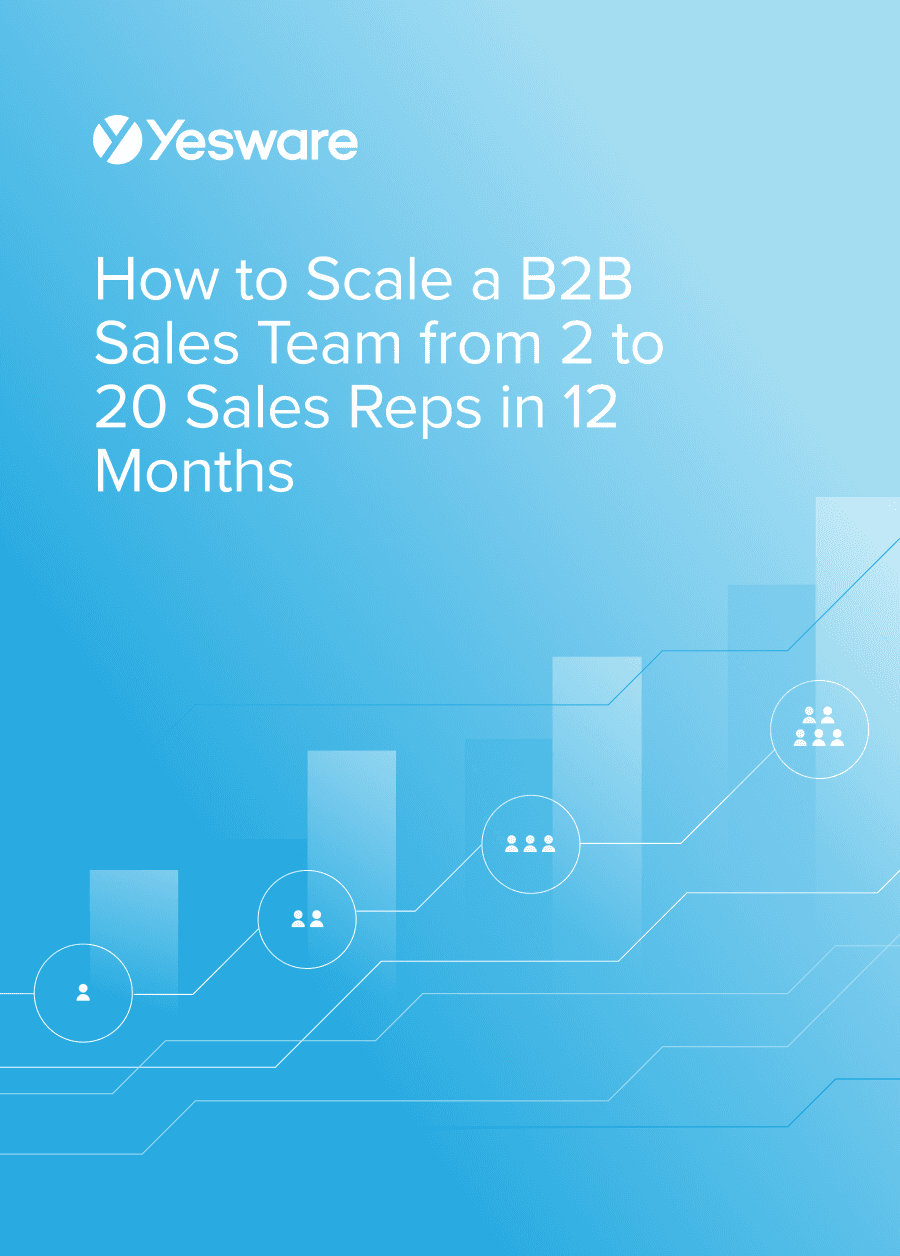 How to Scale a B2B Sales Team from 2 to 20 Sales Reps in 12 MonthsA step-by-step blueprint and action plan for growing a sales team in a way that maximizes profitability.
How to Scale a B2B Sales Team from 2 to 20 Sales Reps in 12 MonthsA step-by-step blueprint and action plan for growing a sales team in a way that maximizes profitability.
Sales Growth Strategies for Success
Here are some of the best strategies to consider for improving your sales growth.
Know Where You Currently Stand
Before you start thinking about how to improve your sales growth, you have to have a clear picture of where you currently stand.
Which sales reps are hitting quota, and which are coming up short? Are your sales and marketing teams adequately aligned? Can you pinpoint when sales started to slow down or pick up?
Make sure you take the time to wrap your head around the big picture before you start diving into specific strategies.
Define Your ICP and Buyer Personas
You won’t see continuous sales growth unless your sales and marketing teams have collaborated to clearly outline the specifics of your ideal customer profile (ICP) and buyer personas. 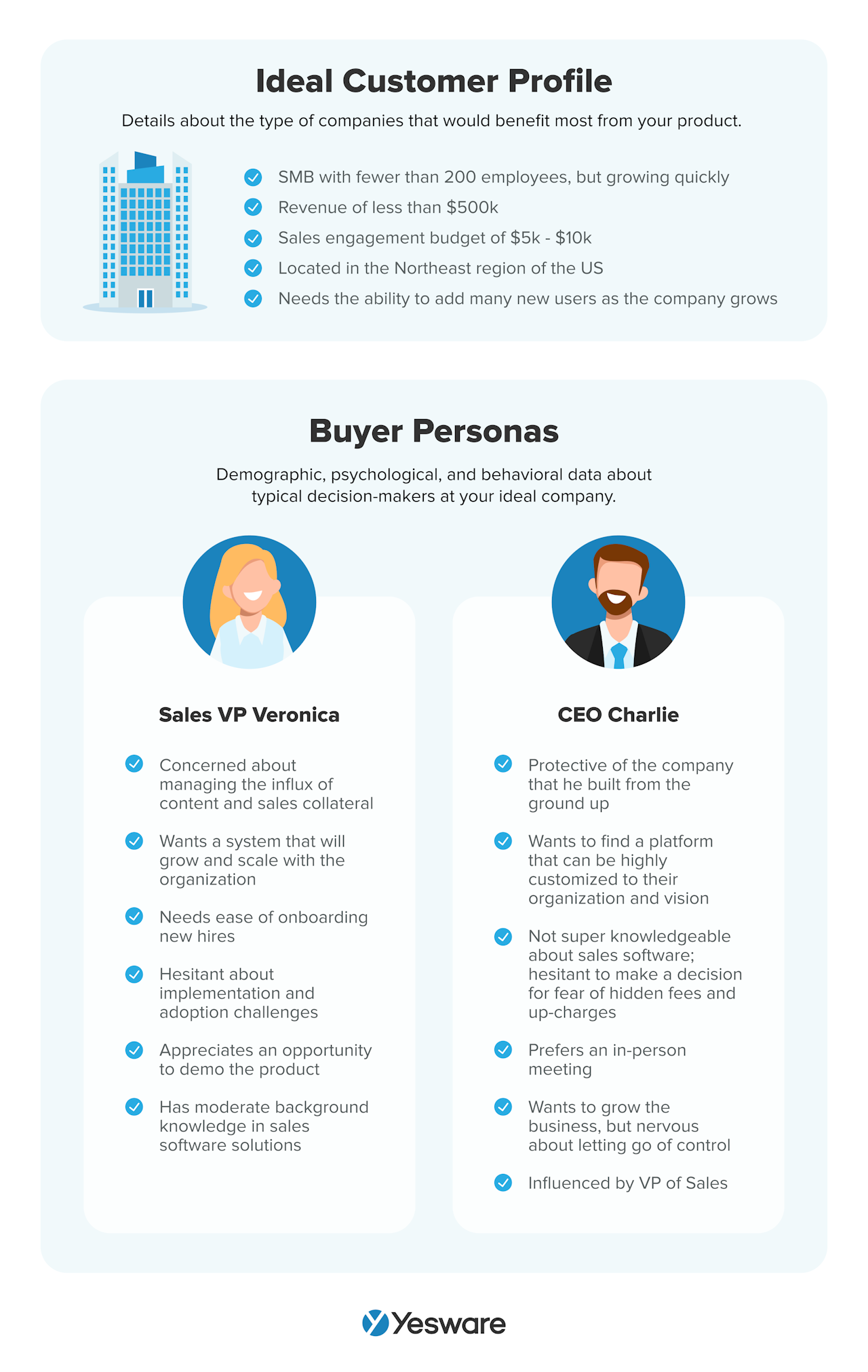 Targeting the wrong market, or creating your pitch with the wrong buyer in mind, will prevent lasting sales growth.
Targeting the wrong market, or creating your pitch with the wrong buyer in mind, will prevent lasting sales growth.
Map Out Your Sales Process
To that same end, you’ll also want to sit down and map out the specifics of your sales process.
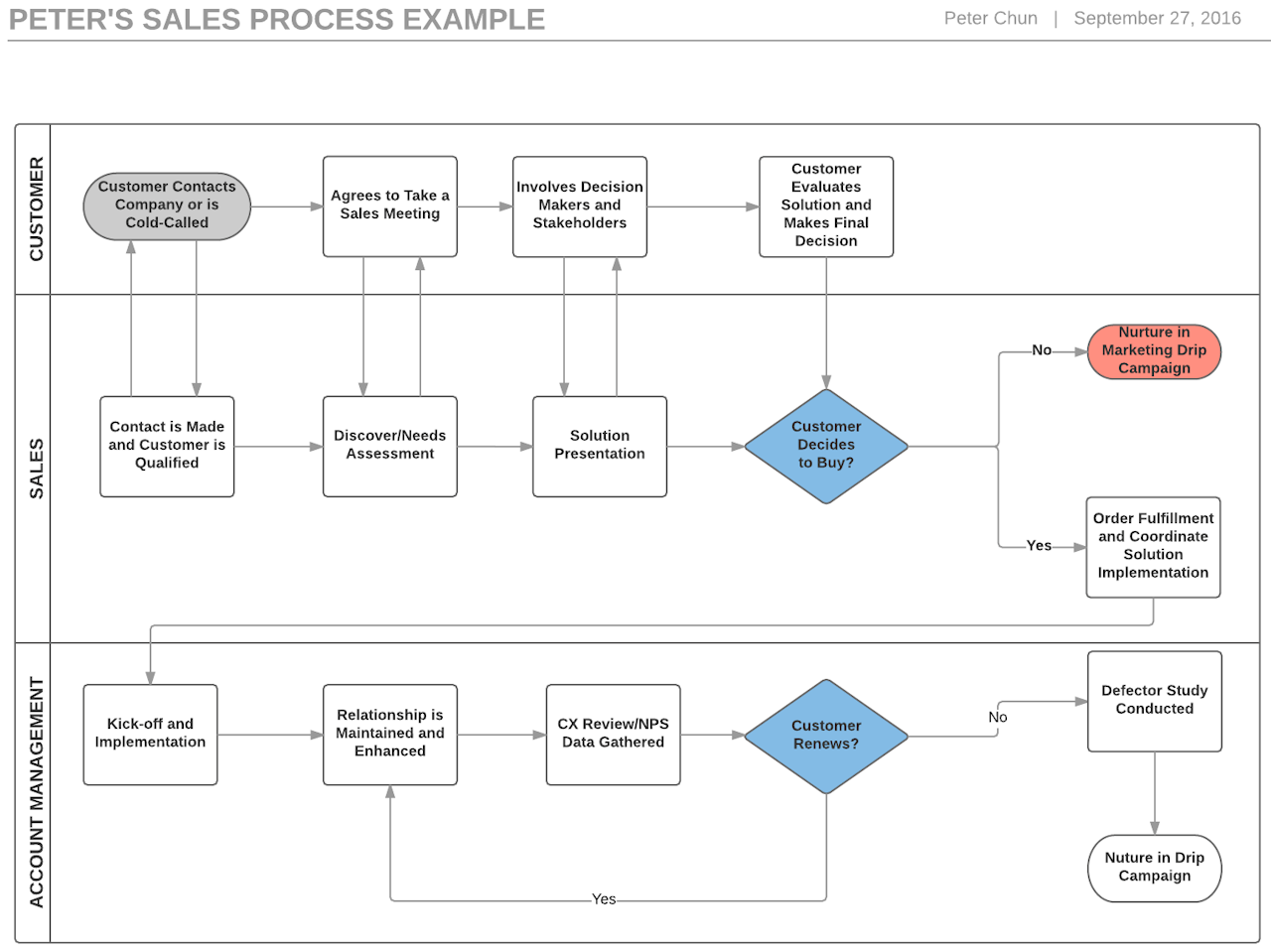
This will help you identify any bottlenecks in the process and can also be helpful in creating a sales playbook for your team to use moving forward.
Deepen Your Roots
Many marketing and sales teams make the mistake of reaching farther out too soon, rather than reaching further down where they already are.
In other words, you should aim to fully saturate the market(s) you’re already in before expanding your horizons to new ones. This is how you achieve the most sustainable and impactful sales growth. It also helps lower customer acquisition costs (CAC).
Personalize Your Process
Personalization in the sales process is non-negotiable for today’s B2B buyer.

Adding a first name to a subject line is no longer enough to make you stand out from a marketing perspective; campaigns, pitches, presentations, and offers all need to be highly customized to each buyer’s unique needs.
Social selling can be one very effective strategy for improving sales growth. 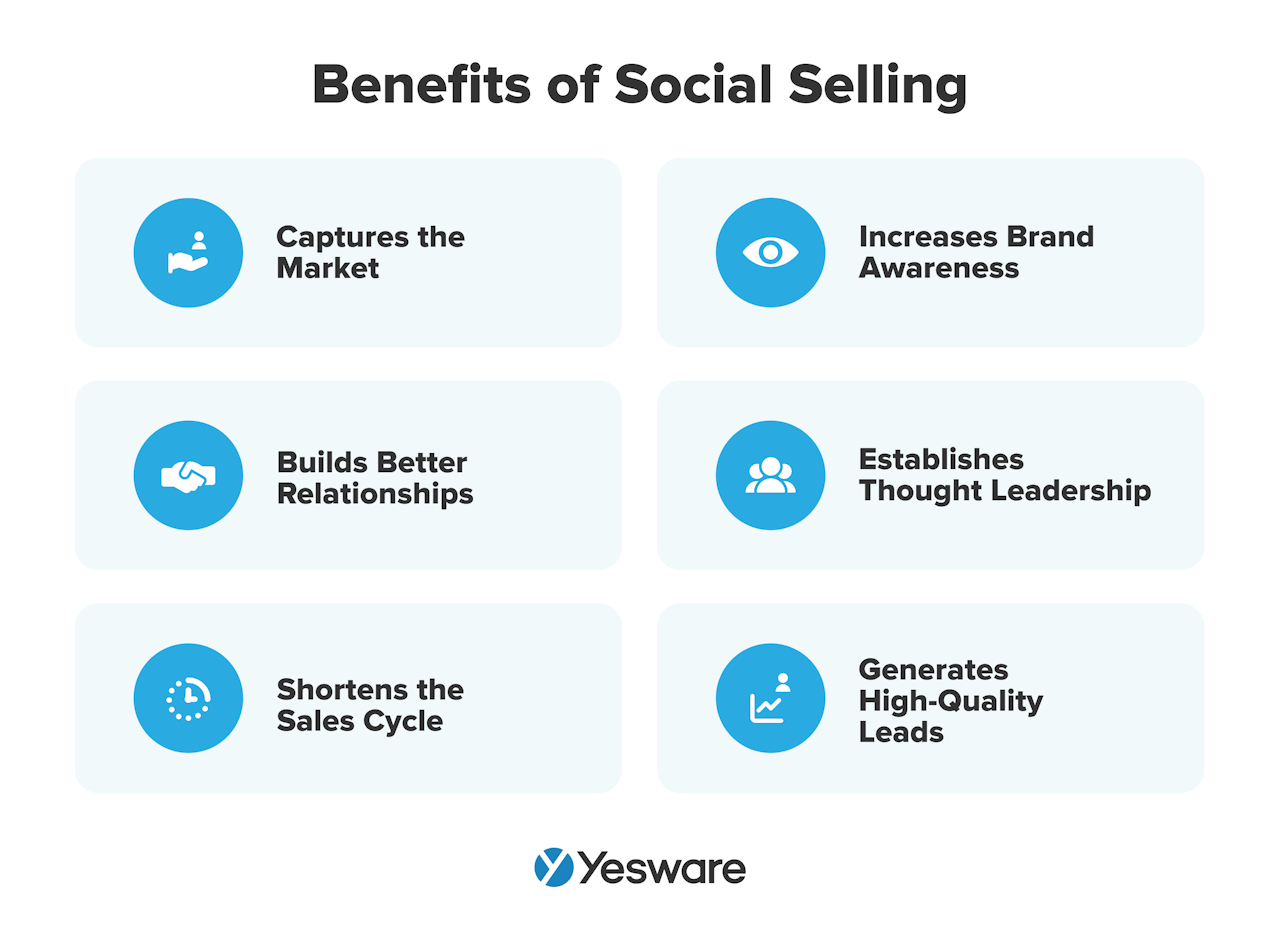 Sophisticated social selling strategies like social listening are becoming more common as sellers work to deliver personalized value to the buyer.
Sophisticated social selling strategies like social listening are becoming more common as sellers work to deliver personalized value to the buyer.
Cross-Sell, Upsell, and Refer
This strategy is similar to the idea of saturating the current market before looking to new ones.
It’s always a good idea to try to generate new leads, but make sure you’re also re-targeting your current customers, as well.
Cross-selling and upselling can both have significant effects on sales growth. McKinsey found that cross-selling can increase a business’s revenue by 20% and its profitability by 30%, and upselling has been shown to increase revenue by more than 40%. 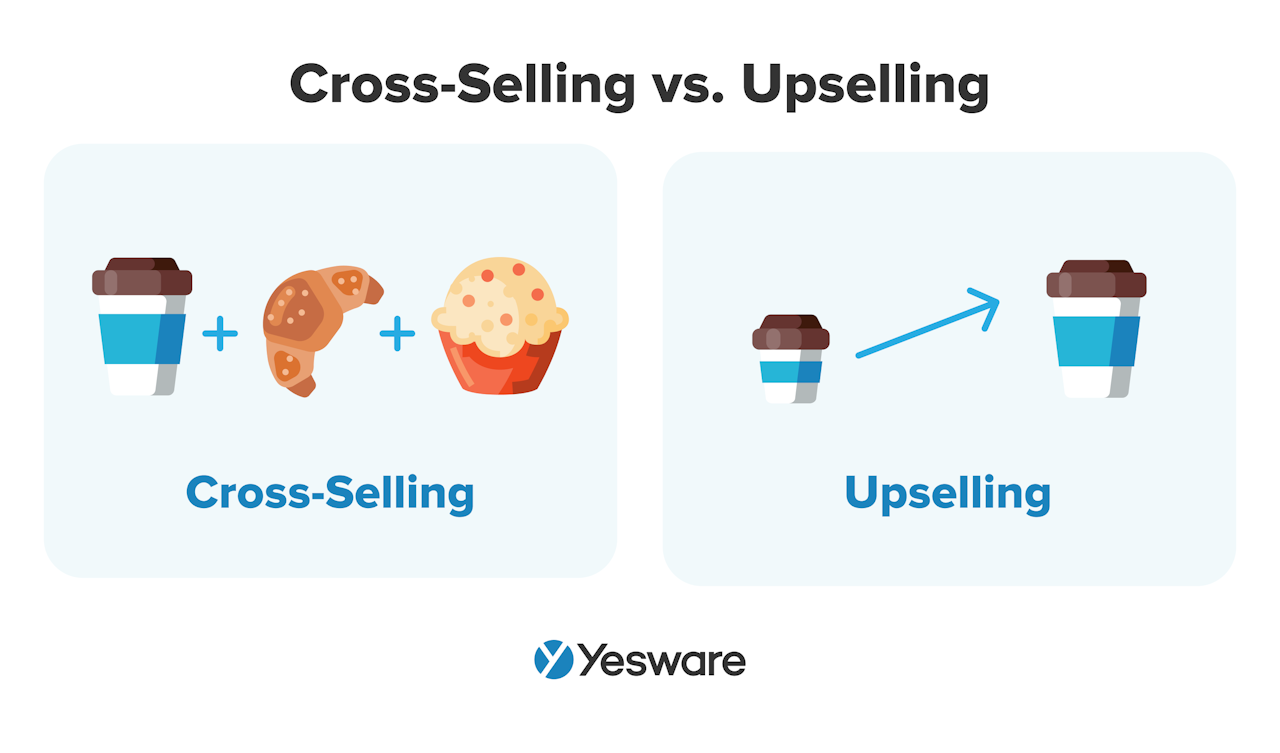 Incentivized referrals can also have dramatic effects on sales growth. Research has shown that companies with formalized referral programs experience 86% more sales growth than those that don’t.
Incentivized referrals can also have dramatic effects on sales growth. Research has shown that companies with formalized referral programs experience 86% more sales growth than those that don’t.
Simple customer surveys can help you gauge interest levels when it comes to how to best cross-sell, upsell, and encourage referrals within your target market.
Play Around With Pricing Strategy
Changes in your pricing strategy can make a surprisingly big difference in revenue generation and sales growth. 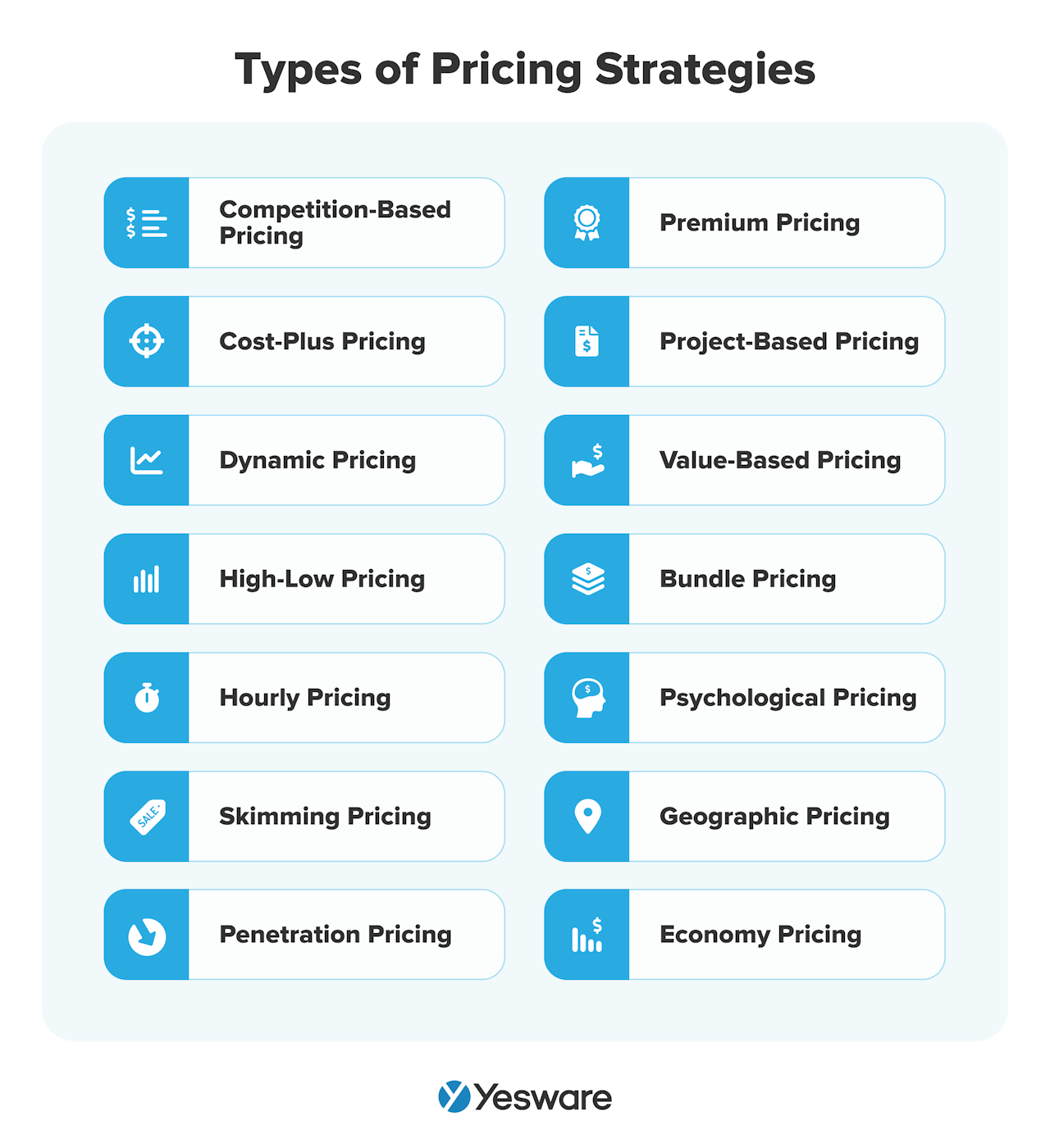 Studies have shown that finding the right pricing strategy can be 7.5x more impactful to an organization than customer acquisition.
Studies have shown that finding the right pricing strategy can be 7.5x more impactful to an organization than customer acquisition.
Improve Your Sales Enablement
A sales enablement program is designed to equip sellers with the information, resources, and tools they need to be more productive, create better relationships with buyers, and close more deals.
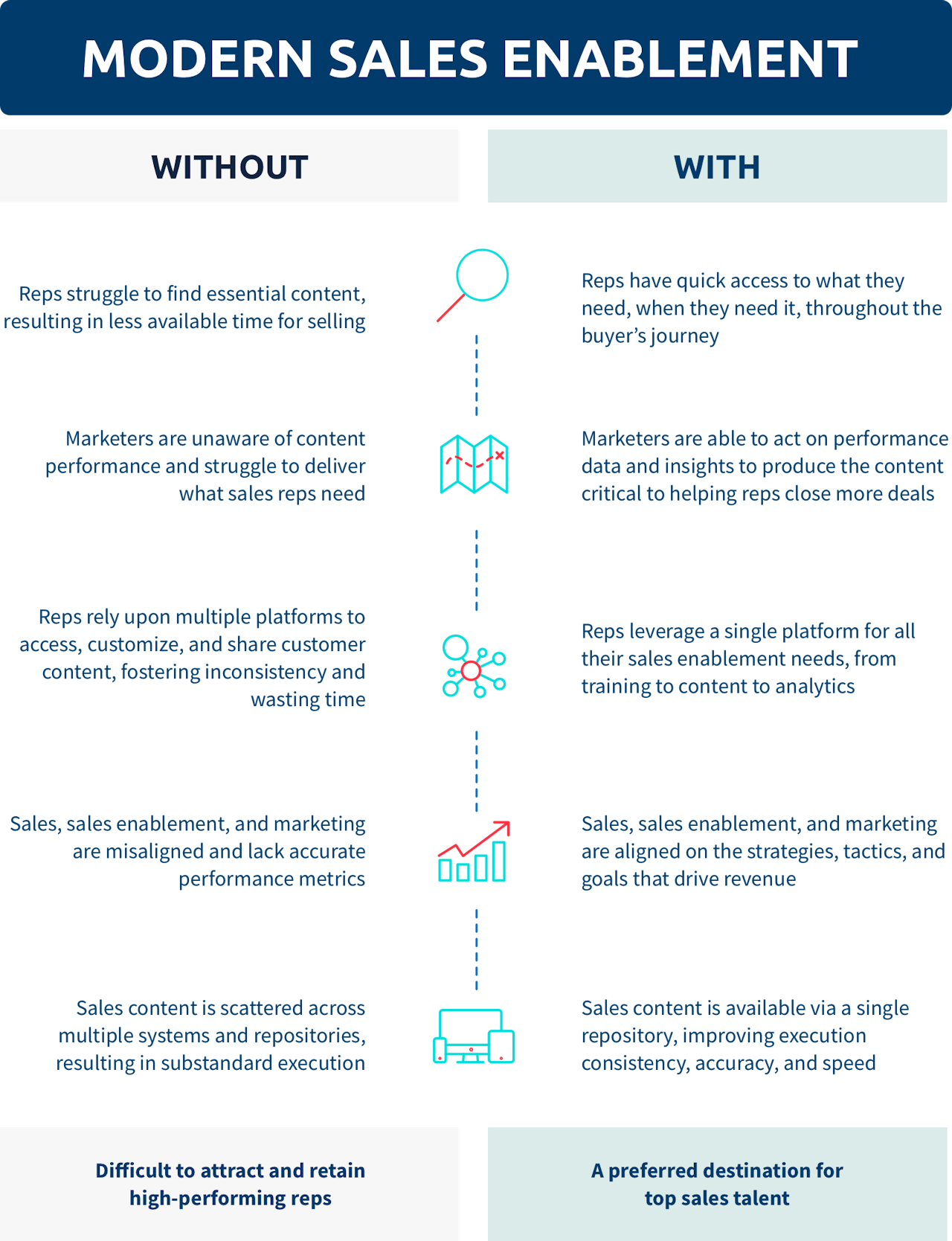
Sales enablement helps make the sales process more effective and efficient for the seller, and more valuable for the buyer.
How does your team approach sales growth? What does your organization consider a “good” sales growth rate? What strategies can you implement now to improve your sales growth rate for the next period?
Get sales tips and strategies delivered straight to your inbox.
Yesware will help you generate more sales right from your inbox. Try our Outlook add-on or Gmail Chrome extension for free, forever!
Related Articles
Casey O'Connor
Casey O'Connor
Casey O'Connor
Sales, deal management, and communication tips for your inbox

